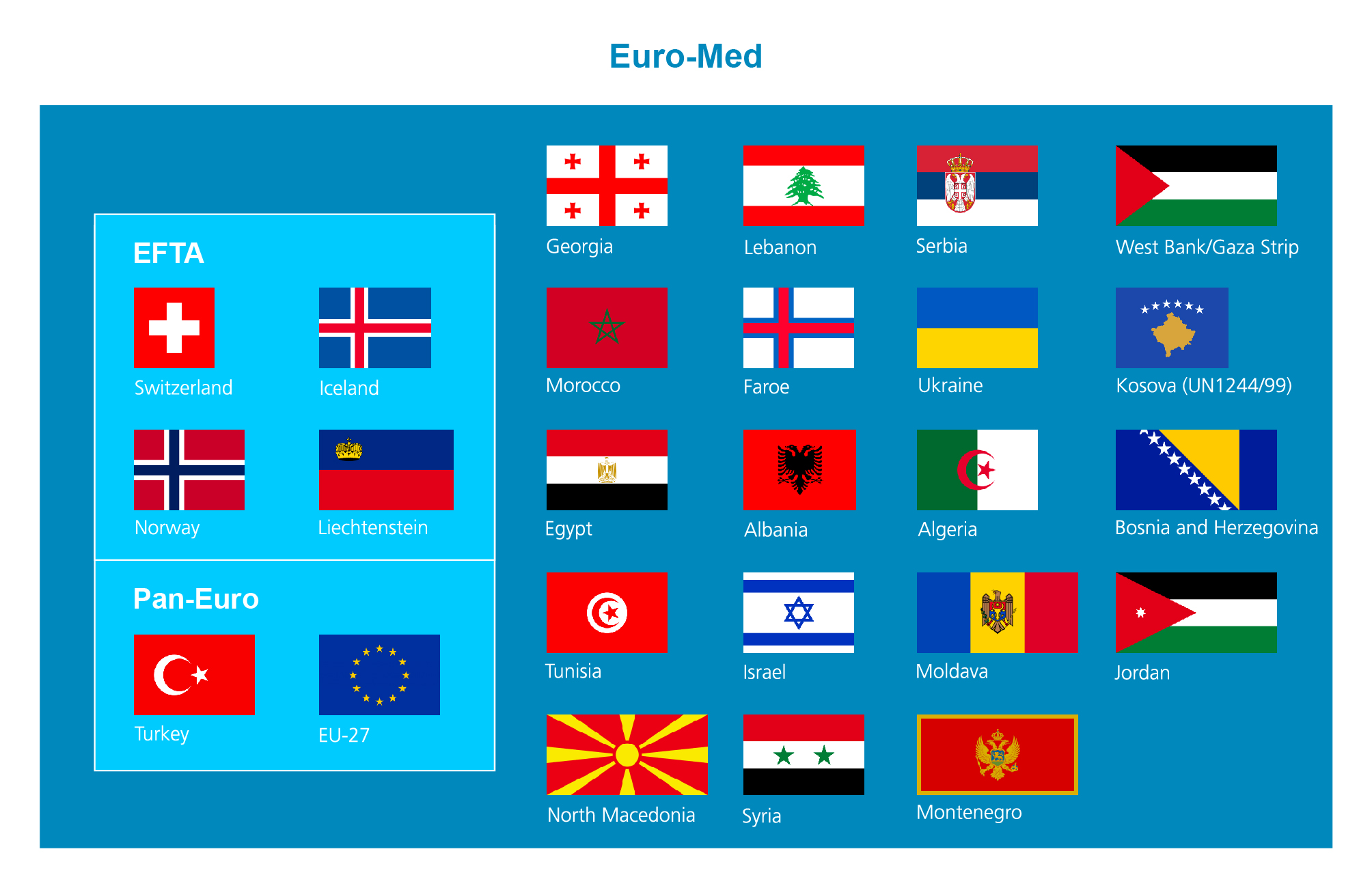The revised PEM Convention has entered into force on 1 January 2025and automatically applied to all free trade agreements (FTA) that contain a so-called ‘dynamic reference’ to the PEM Convention.
At the same time, the old rules of origin could be applied alternatively during a transitional period from 1 January 2025 to 31 December 2025. From 1 January 2026, only the rules of origin of the revised PEM Convention will apply if an FTA contains a dynamic reference to the PEM Agreement. This applies (as of 5 December 2025) to the following FTAs of Switzerland / EFTA:
• Switzerland – EU
• EFTA Convention
• EFTA – Albania
• EFTA – Bosnia and Herzegovina
• EFTA – Georgia
• EFTA – Moldova
• EFTA – Montenegro
• EFTA – North Macedonia
• EFTA – Serbia
• EFTA – Türkiye
For FTAs without a dynamic reference to the PEM Convention, only the old rules of origin in accordance with the relevant origin protocols will continue to apply. This applies (as of 5 December 2025) to the following FTAs of Switzerland / EFTA:
• Switzerland – Faroe Islands
• EFTA – Egypt
• EFTA – Israel
• EFTA – Jordan
• EFTA – Lebanon
• EFTA – Morocco
• EFTA – Palestine
• EFTA – Tunisia
• EFTA – Ukraine
This means that from 1 January 2026, there will be two cumulation zones in which diagonal cumulation will only be possible under the rules of origin of either the old or the revised PEM Convention. Diagonal cumulation with input materials from the other zone will no longer be possible.
Further information on the adoption of the revised PEM Convention and the tran-sitional provisions can be found here .
- Information note for the business community (content available only in German, French or Italian)
- R-30 Free trade agreements, preferential tariffs and origin of goods (content available only in German (PDF, 245 kB, 19.12.2025), French (PDF, 245 kB, 19.12.2025) or Italian (PDF, 243 kB, 19.12.2025))
- Zirkular (content available only in German, French or Italian)
- Overview of free trade agreements for industrial products (content available only in German (PDF, 188 kB, 01.01.2026), French (PDF, 188 kB, 01.01.2026) or Italian (PDF, 188 kB, 01.01.2026))
- Merkblatt «Lieferantenerklärungen im Inland» (content available only in German (PDF, 261 kB, 01.10.2025), French (PDF, 293 kB, 01.10.2025) or Italian (PDF, 281 kB, 01.10.2025))






